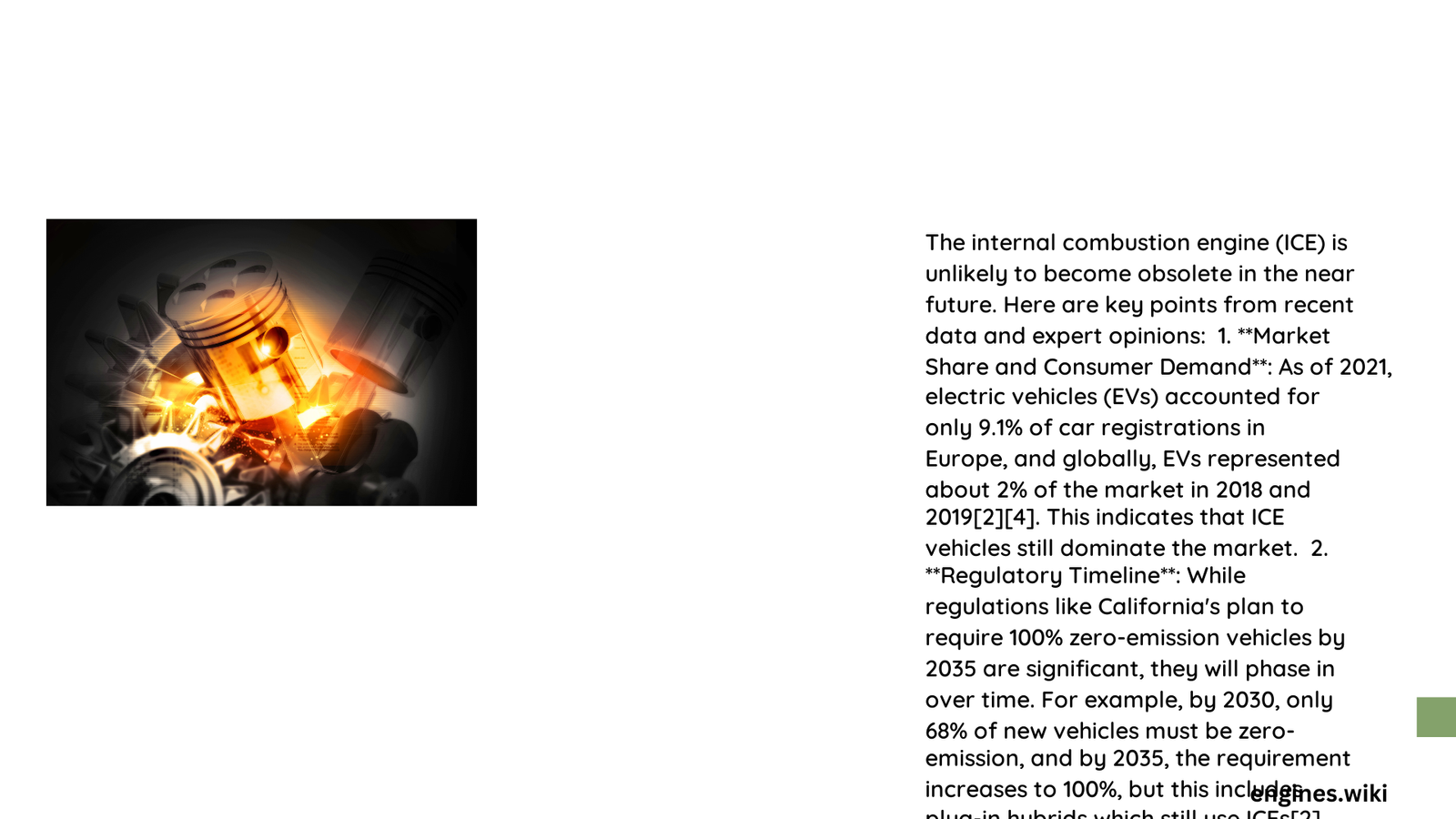The internal combustion engine (ICE) stands at a critical technological crossroads, facing unprecedented challenges from electric vehicle advancements, stringent environmental regulations, and global decarbonization efforts. As governments worldwide implement aggressive emissions reduction strategies and automotive manufacturers pivot towards electrification, the traditional ICE is experiencing a transformative period that could potentially lead to its gradual phase-out by 2035-2040.
What Drives the Potential Obsolescence of Internal Combustion Engines?
Regulatory Landscape Reshaping Automotive Technology
The global regulatory environment is rapidly pushing internal combustion engines towards obsolescence. Key developments include:
| Region | Regulatory Target | Year | Specific Action |
|---|---|---|---|
| European Union | Zero-Emission Vehicle Mandate | 2035 | Ban on new ICE vehicle sales |
| California, USA | Zero-Emission Transition | 2035 | Prohibition of new ICE vehicle sales |
| United Kingdom | ICE Phase-Out | 2030 | Halt of new petrol and diesel vehicle sales |
Economic and Environmental Pressures
The transition away from internal combustion engines is driven by multiple interconnected factors:
- Carbon Emission Reduction
- ICE vehicles contribute approximately 15% of global CO2 emissions
- Electric vehicles offer 70-80% lower lifecycle carbon footprint
-
Governments incentivize low-carbon transportation solutions
-
Technological Advancements
- Battery technology improvements
- Decreasing electric vehicle production costs
- Enhanced charging infrastructure
Will Electric Vehicles Completely Replace Internal Combustion Engines?
While complete replacement seems inevitable, the transition will be gradual. Projections suggest:
- By 2030: 50-60% of new vehicle sales expected to be electric
- By 2040: Potential 80-90% market share for electric and alternative fuel vehicles
- Hybrid technologies will likely serve as transitional solutions
What Challenges Remain for Electric Vehicle Adoption?
Critical challenges include:
- Infrastructure Development
- Widespread charging network expansion
- Grid capacity enhancements
-
Energy storage solutions
-
Battery Technology Limitations
- Current energy density constraints
- Raw material sourcing challenges
- Recycling and sustainability concerns
Economic Implications of ICE Obsolescence
The shift away from internal combustion engines will create significant economic disruptions:
- Potential job losses in traditional automotive manufacturing
- Massive investments in electric vehicle supply chains
- Restructuring of global automotive industry ecosystems
Technological Alternatives to Traditional Internal Combustion Engines
Emerging technologies offering potential alternatives:
- Hydrogen fuel cell vehicles
- Advanced biofuel engines
- Synthetic carbon-neutral fuels
- Improved hybrid powertrains
Conclusion: A Transformative Technological Transition

The internal combustion engine’s obsolescence appears increasingly probable, driven by environmental imperatives, technological innovation, and global regulatory frameworks. While complete replacement will take decades, the trajectory is clear: electric and alternative fuel technologies are poised to dominate future transportation landscapes.
Key Takeaways
- Regulatory pressures accelerate ICE phase-out
- Electric vehicles represent primary replacement technology
- Transition will occur gradually over 15-20 years
- Significant technological and economic adaptations required
References:
– European Commission Emissions Regulations
– International Energy Agency Report
– Global Automotive Research Reports
